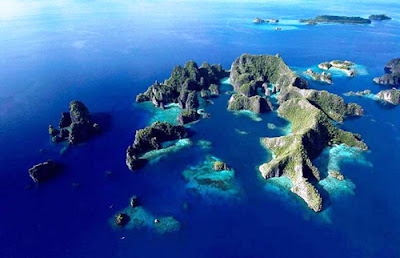World best dive destination located off coast of Sorong in West Papua of Indonesia, Raja Ampat (which literally translates as “The Four Kings”) has a startling diversity of habitats to explore. Each of these – from the stark wave-pounded slopes that drop away beneath the karst cliffs of Wayag and Uranie to the deep, nutrient-rich bays of Mayalibit, Kabui and Aljui to the “blue water mangrove” channels of Kofiau and Gam to the plankton-rich upwelling areas of Misool and the Dampier Strait – are home to unique assemblages of species that, when taken together, add to produce the most impressive species lists ever compiled for a coral reef system of this size.
Marine tourism, as a sustainable alternative to overfishing, mining, and logging, has the potential to play a key role in the conservation of Raja Ampat’s spectacular underwater realm, while also creating real benefits for the local communities. For complete information about Raja Ampat, Please click this link ► Raja Ampat










